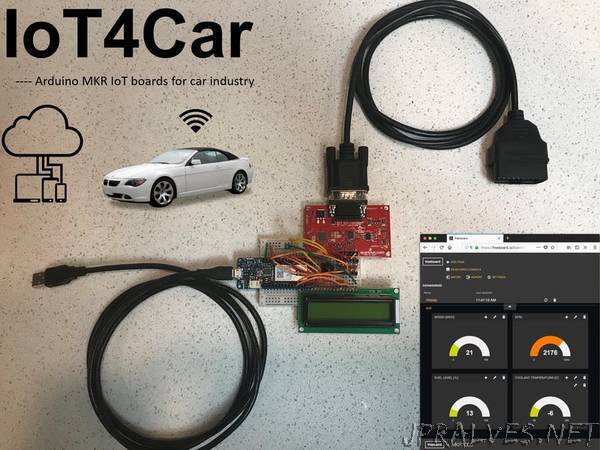
“MKR WiFi 1000 talks to a car through OBD-II interface, and uploads the data to IoT cloud for real-time monitoring and post-processing.
Story
Background
When driving your vehicle, glancing at your dashboard, have you ever thought of collecting the meter readings and do some analysis? These data may contain hidden treasures. For individuals, it can reflect your driving habits, it can tell you your speed, your average mpg, how many traffic lights you have, and your waiting time at each cross. For companies, these data are critical for real-time monitoring in fleet management. Vehicle condition, work load distribution, gasoline efficiency, and even vehicle location can all be fed back to a central control system through cloud. Companies can use machine learning to feed the data into a training model to predict the cost and even analyze the driver’s characteristics. As IoT is widely spreading, the above applications won’t be far away. With the Arduino MKR boards, targeting at IoT applications, you can build a device that talks to your car and uploads telemetric data into cloud all by yourself. Isn’t that cool?
Talking to a vehicle
We need an interface to access into the vehicle system. Where can we hack into the car? The answer is OBD-II interface.
What is OBD-II?
On-Board Diagnostics (OBD) is a vehicle’s built-in self-diagnostic system, through which we can communicate with our cars. It was first introduced in United States in 1994, and became a requirement on all 1996 and newer US vehicles. Other countries, including Canada, parts of the European Union, Japan, Australia, and Brazil adopted similar legislation. OBD-II (second generation) has five signaling protocols, and Controller Area Network (CAN bus) is one of them. CAN bus is required to be implemented in all the US cars since 2008. There is a great introduction of OBDII provided by CSS Electronics on Youtube. In this project, we will access data through the 16 pin OBD-II interfaces.”
